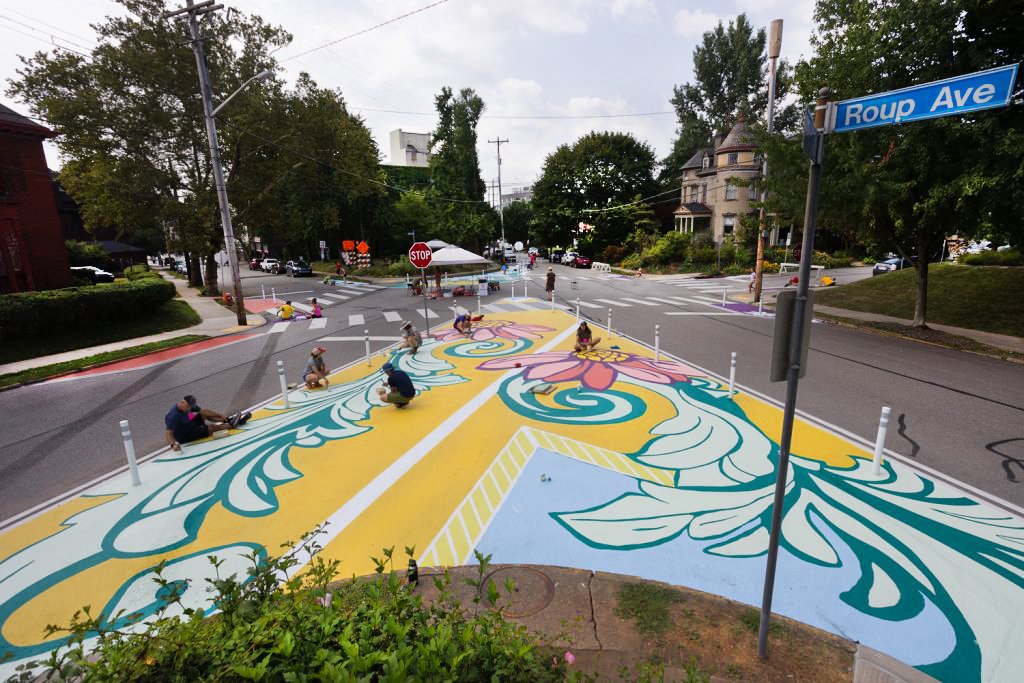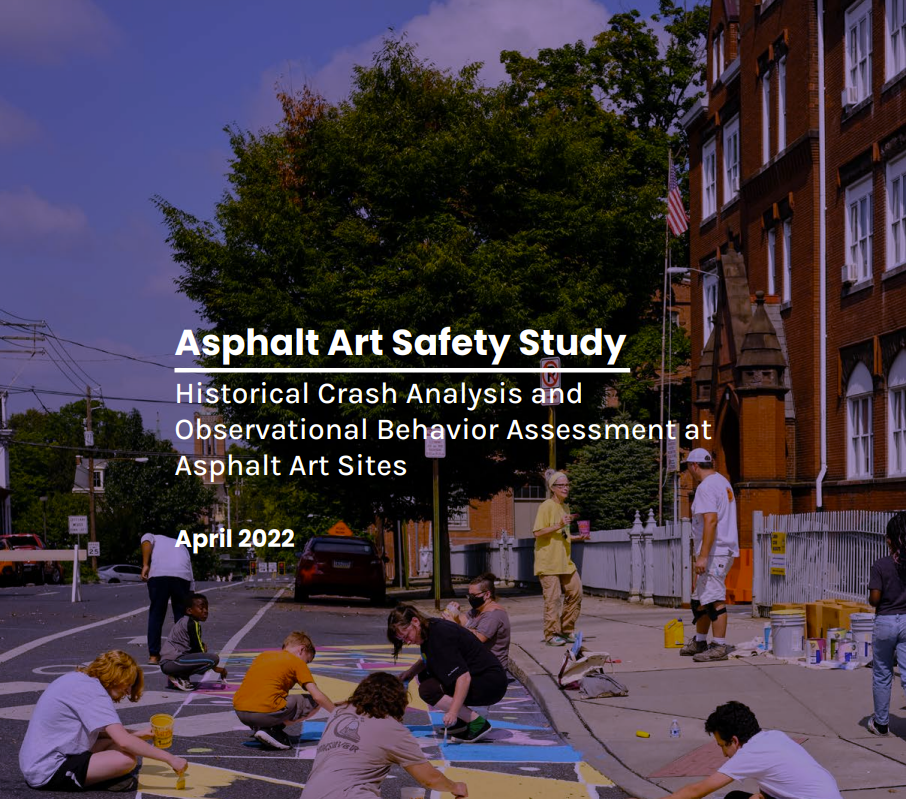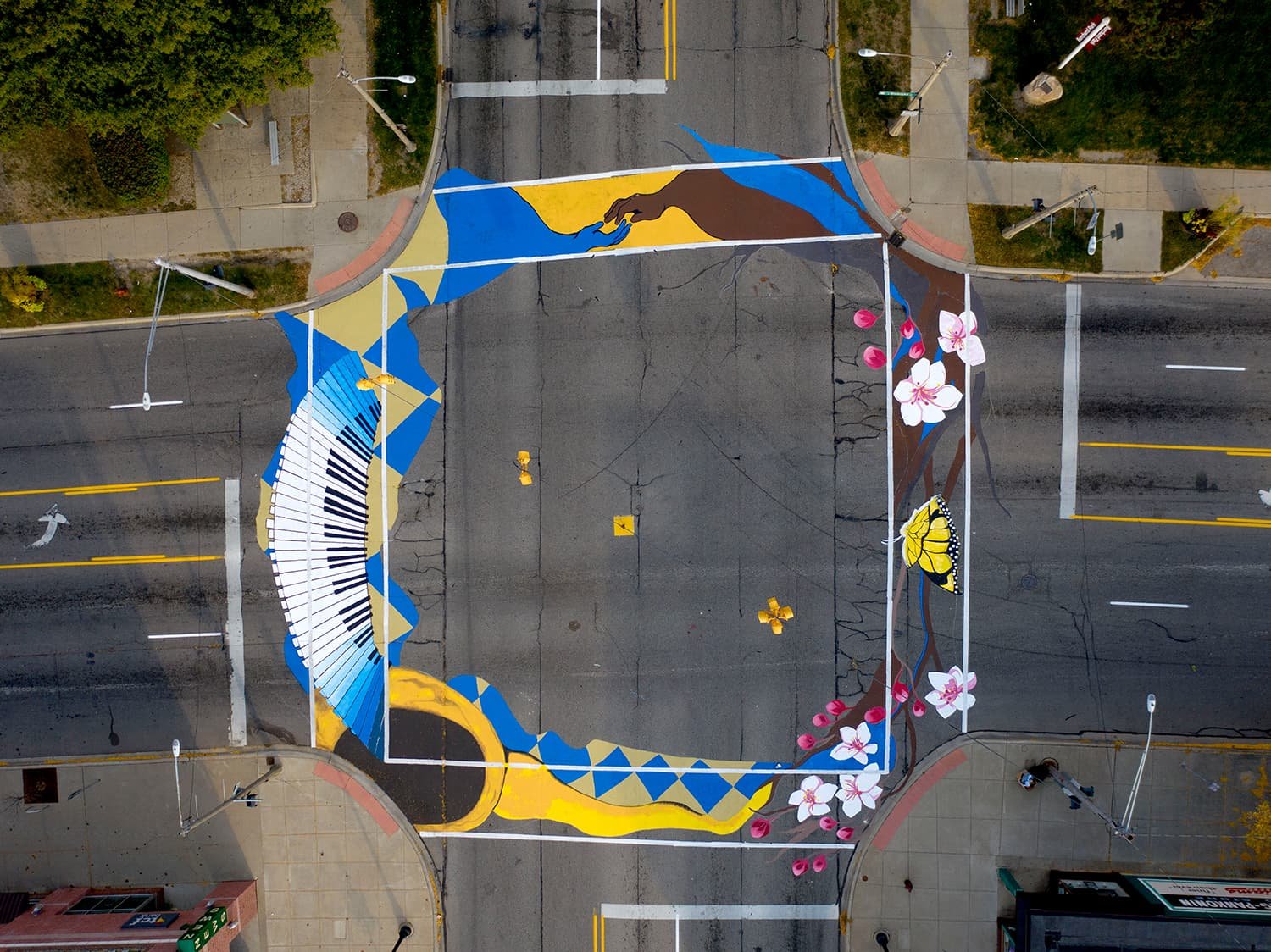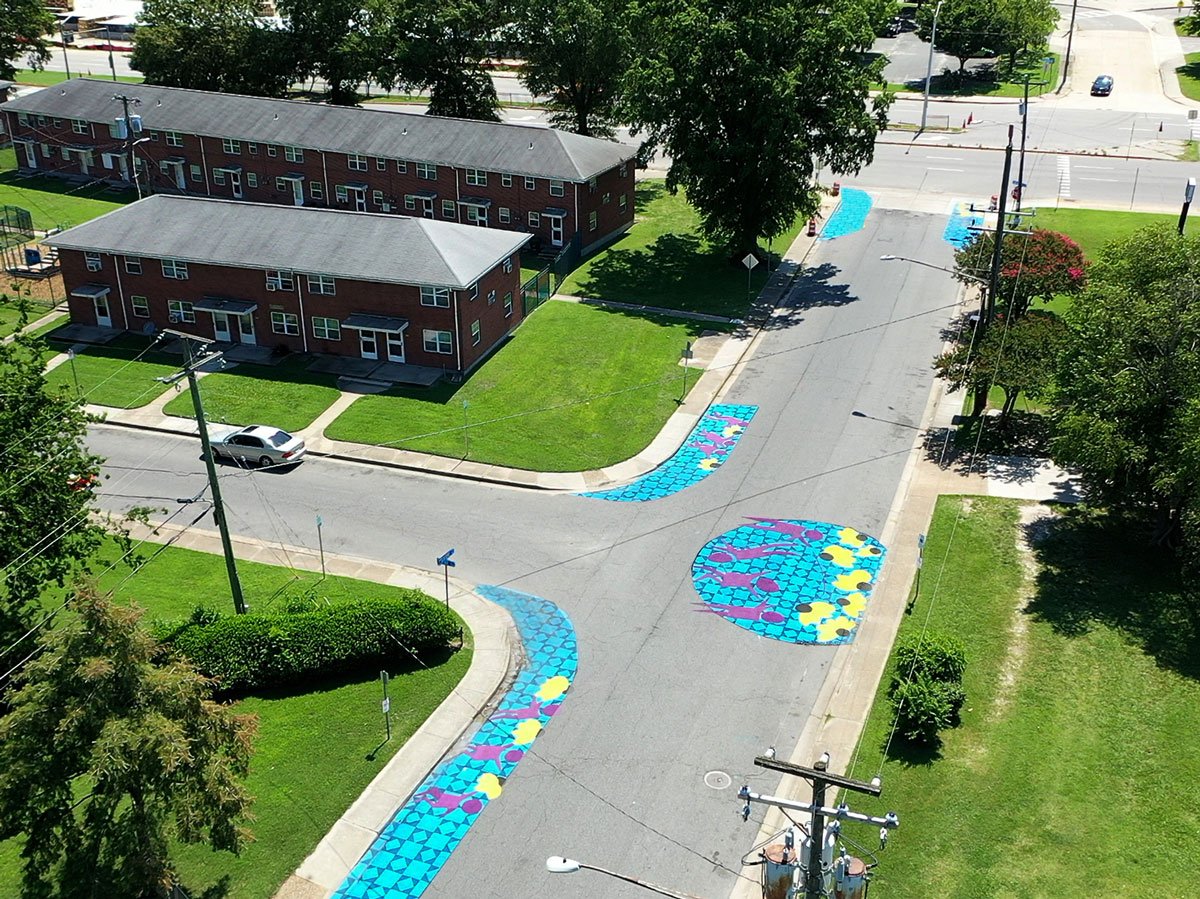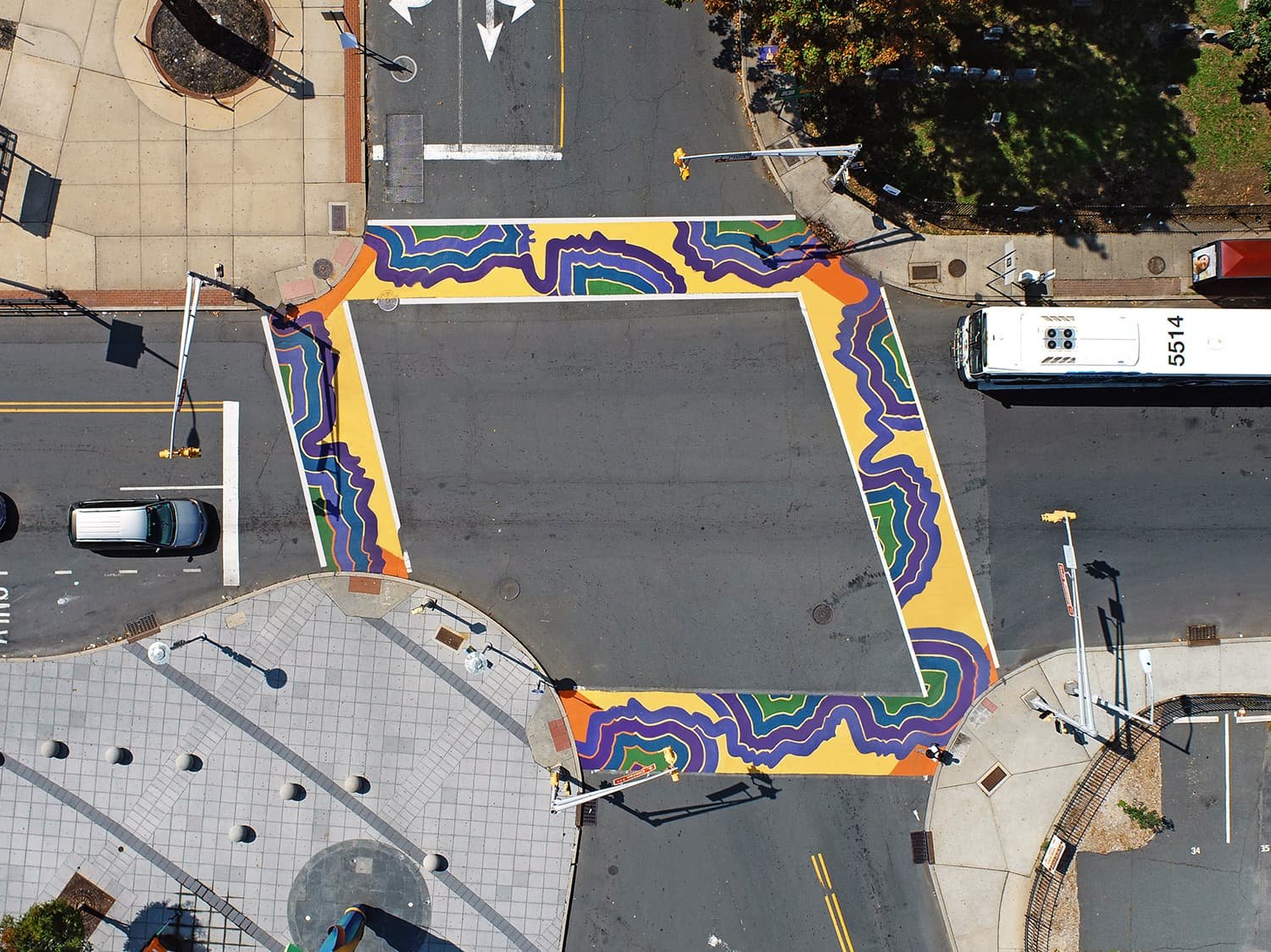Location
National
Client
Bloomberg Philanthropies
Services
Behavior Assessment
Crash Analysis
Asphalt art safety study
Credit (above): Friendship Community Group, Bloomberg Philanthropies
Credit (all other images): Bloomberg Philanthropies
Public art projects coupled with improvements to transportation infrastructure, often known as “asphalt art,” offer many benefits. They can create safer, more desirable streets and public spaces. They are typically inexpensive and quickly implementable, while helping cities test long-term roadway redesigns. In addition, they help local governments engage with residents to reshape their communities. However, art within the public roadway network has faced regulatory hurdles because of concerns about compliance with current design standards and guidance that governs roadway markings. These concerns have persisted in the absence of much rigorous evaluation or published literature on safety performance of asphalt art projects.
Sam Schwartz collaborated with Bloomberg Philanthropies to address the need for impact analysis by comparing crash rates and real-time behavior of pedestrians and motorists at an array of asphalt art sites before and after the projects were installed. There are two main components to the study: the first is a Historical Crash Analysis that compares crash data prior to and after the introduction of asphalt art at 17 diverse study sites with at least two years of data. The second is an Observational Behavior Assessment that compares before and after video footage of motorist and pedestrian behavior at five U.S. locations with asphalt art projects installed in 2021 as part of the Bloomberg Philanthropies’ Asphalt Art Initiative. The analysis found significantly improved safety performance across a variety of measures during periods when asphalt art was installed.

